Recently my friend and colleague, Dr. Janet Edgette, had an article published in the Equine Wellness Magazine about dealing with performance anxiety. I strongly recommend reading the article. Dr. Edgette was an early mentor of mine and I have always respected her ability to see beyond the mental skills techniques to the underlying individual and family concerns, producing meaningful and lasting results for her clients.
In her article, Dr. Edgette raised concerns about visualization and pointed out numerous ways in which visualization can go wrong and potentially make problems worse. These concerns make sense and riders should be cautioned that the pitfalls she points out are worth being aware of and avoiding whenever possible. As I reflected further, however, I got to wondering about why so many of my clients have had success with visualization techniques.
I realized that the reason visualization can be a problem is the fact that it is a potent technique. If visualization did not have an impact, it really wouldn’t matter how it was applied. Dr. Edgette is wise to highlight the pitfalls of the pursuit of “perfect” when using visualization. The mere fact that a rider is practicing both the impossible and the impractical can only lead to disappointment, stress, and an increase in nerves or anxiety. Yet, poor results when misapplying a technique does not justify abandoning the technique.
So, how can you get visualization working for you? One key to successful use of visualization in preparation for sport is to focus on practicing a positive or effective state of mind, rather than practicing perfection in execution. If feeling anxious or nervous is your problem, clearly identify how you do want to feel as you compete. Identify the feelings or state of mind you wish to substitute for the nerves or anxiety. You can connect to that positive or productive feeling state or state of mind, and then visualize your ride in a way that you carry that feeling state throughout.
Another key is to use visualization in different ways to attain different goals. In his book The Talent Code, Daniel Coyle explores two kinds of practice, deep practice and what I will call practice for performance. In deep practice, we are perfecting a particular skill. As we develop that skill, we may stop what we are doing and go over the skill repeatedly until we “get it right”. In practice for performance, we are practicing quickly recovering from any mistakes and moving on in a manner that maintains the integrity of the whole be it a dressage test or a jumper round. We can use these ideas to get the most out of our visualization. When mastering a technique or movement, we can use visualization in the “pursuit of perfection” (our own personal perfection) as a pathway to learning and repeated practice which is often not possible on our horses. When preparing for competition we can use visualization to practice an effective mindset or feeling state. We can also practice our resilience and adaptability which will often contribute to our best rides.
As consumers of sport psychology techniques, we can easily get seduced by the simplicity of how they are presented in books and articles. Like many meaningful and impactful sets of tools, however; there is an art of application that is learned through guided experience. If you want to develop your own set of effective tools to improve your performance and tackle performance problems, my advice is to not take the short cuts. Get help and assistance in evaluating your situation and guidance in choosing, learning, and applying the appropriate skills. In the long run, both you and your horse will benefit.

